Grace created her own circuit board where the LED’s are symmetrical and all of the connections between the wires are now integrated into the circuit board. It can be used with 3 or 4 AA NiMH circuit or with a single 18650 Lithium battery. It is our basic and most versatile circuit. There is no battery protection.
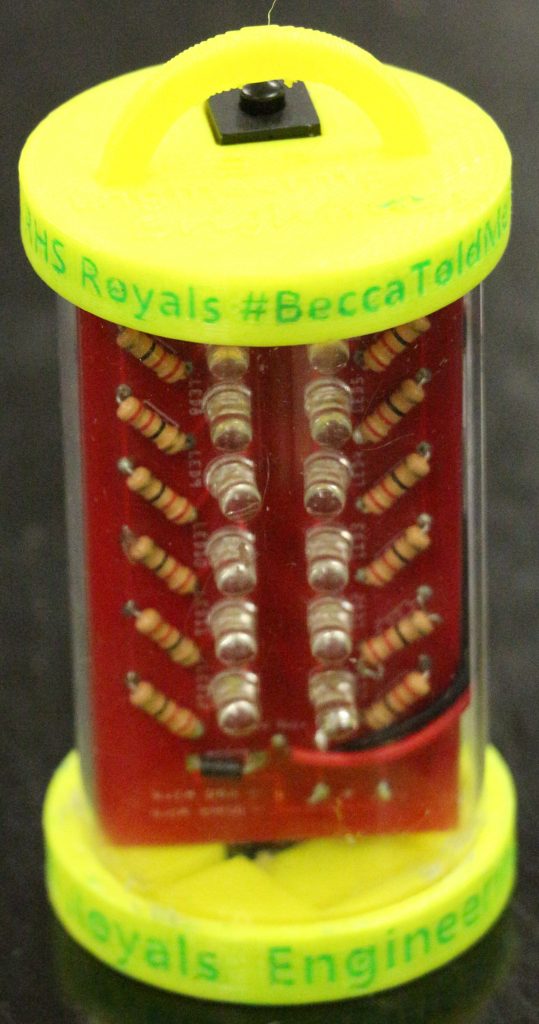
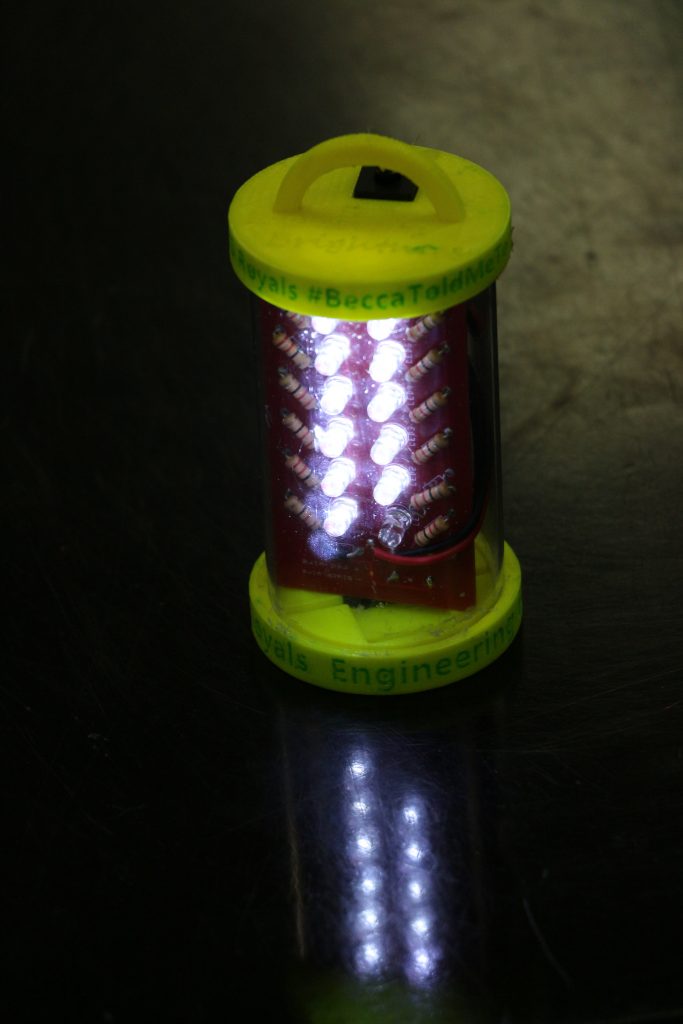
This board uses:
12 x 5mm through hole LEDs; 12 x 22 ohm resistors; 1 diode; a charging port; a switch and a battery pack.
A complete materials list and links is available in the manual. (In the future, click here to take you to the e-store)
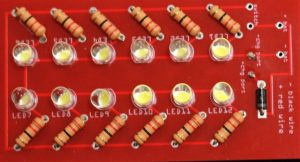
Our friends at Engineering Brightness Colorado made a similar circuit board that had a diode and an asymmetrical pattern of resistors and LED’s. All of their connections to the switches and batteries were done off the circuit board, with some three way wire connections required. Their original wiring did not allow for simultaneous charging and illumination. Grace’s Red Circuit brings symmetry to the LEDs, all of the connections are on the board and it is possible to charge and illuminate at the same time.
3D Printed Case Design
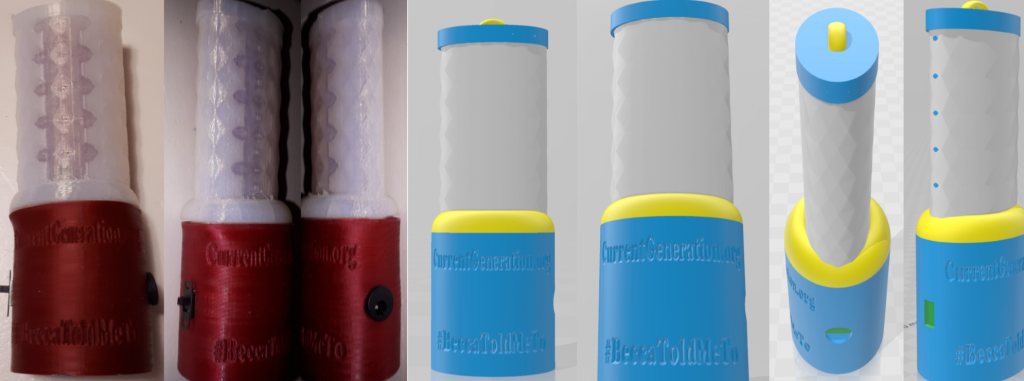
Designed for whole room illumination. LEDs on BOTH sides of the board.
This latest case design (Feb ’20) was spurred from feedback from @educaideSL in Sierra Leone. The hot glue was softening and coming undone. So we redesigned the lens to have a snug fit into the base where a couple of drops of crazy glue are required. Reducing the number of parts gave us a chance to replace the polycarbonate tubing lens and return to a 3D printed lens. The original 3D printed lens was thick, blocked too much light, was heavy and used up too much plastic. This lens used the structural stability of prisms from tow vase designs provided by BOSCH and Dremel at ISTE Phili ’19 so that we can make lens walls that are a maximum of 1.5 mm thick and on the edges are so thin that there are air vents. It seems to have enough structural stability. Most importantly, it seems to act as a diffuser which makes it easier to use and read. The polycarbonate lens allowed a harsh light and more glare on the paper.
We reduced the amount of plastic of the base in one dimension by changing from a cylinder to an oval.

This Tilted Polyhedron design is meant to direct all the lights on one side of the board towards paper or a book for doing homework. The polyhedron design is also a modified vase from BOSCH and Dremel at ISTE Phili ’19.
Student Research on the Circuit
Counter intuitively, 3xAA batteries seems more cost effective than 4xAA
Since batteries are the single most expensive part of the light, reducing our batteries by 25% is a significant consideration. Will 3 batteries be sufficient? Our initial thoughts were that 4 batteries would be brighter and last longer than 3. We were wrong. Three batteries produced almost the same amount of light and what seems to be sufficient light for a longer period of time. Four batteries were a bit brighter, but lasted much less time. The following is an excerpt from Neil’s Lab.
Throughout the years, there have been many prototypes of lights. The concern of this testing was whether three batteries or four batteries was better. To test this, we used a bare Graces circuit board with twelve 5 mm LED’s and twelve 22 ohm resistors set up on a retort stand, facing a PASCO PASport light sensor which was 50 cm away from it. The PASport was hooked up to a computer which was running SparkVue software, to graph the data of the light intensity. We then attached three batteries to the circuit board for five trials, and then repeated the same five trials with four batteries.
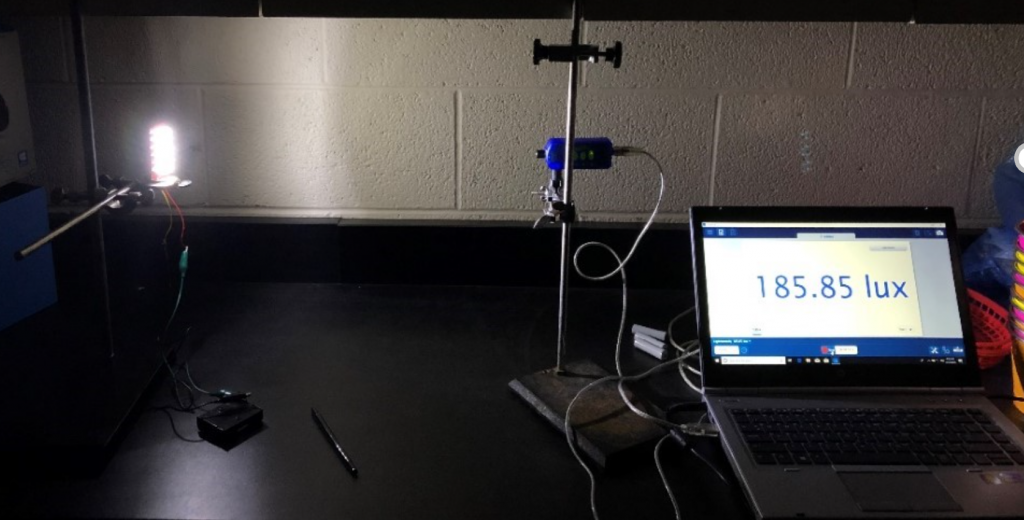
It was found that although the three batteries only produced an average of 180 lux at the brightest points, it lasted for an average of 30497 seconds, while four battery tests produced an average of 250 lux for an average of 13279 seconds. It is clear to see that three batteries last more than double the time, at less intensity. This begs the next question; is 180 lux bright enough?
How was this question answered?:
To figure out if 180 lux is bright enough, we set up the light at 180 lux, 50 cm away from a Snellen Eye Test Chart, and had five test subjects who did not wear glasses take part in a Snellen test.
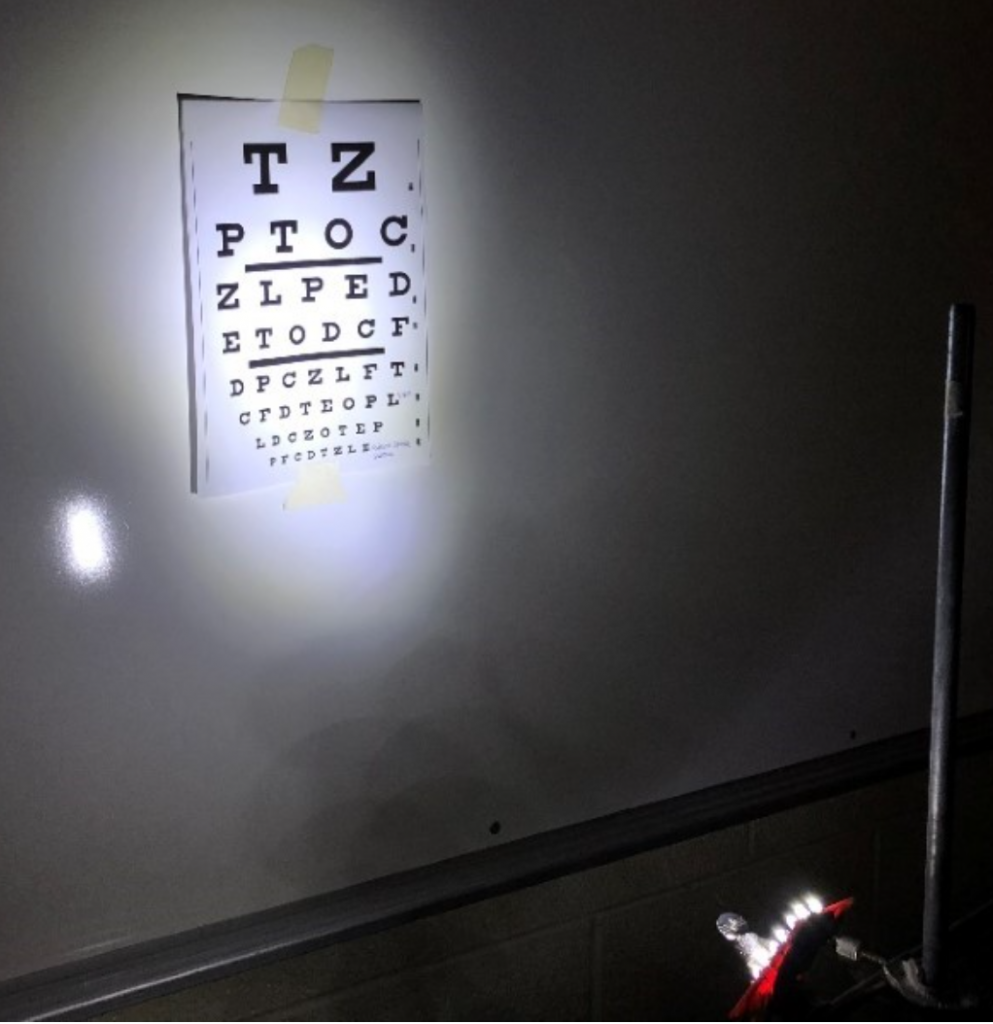
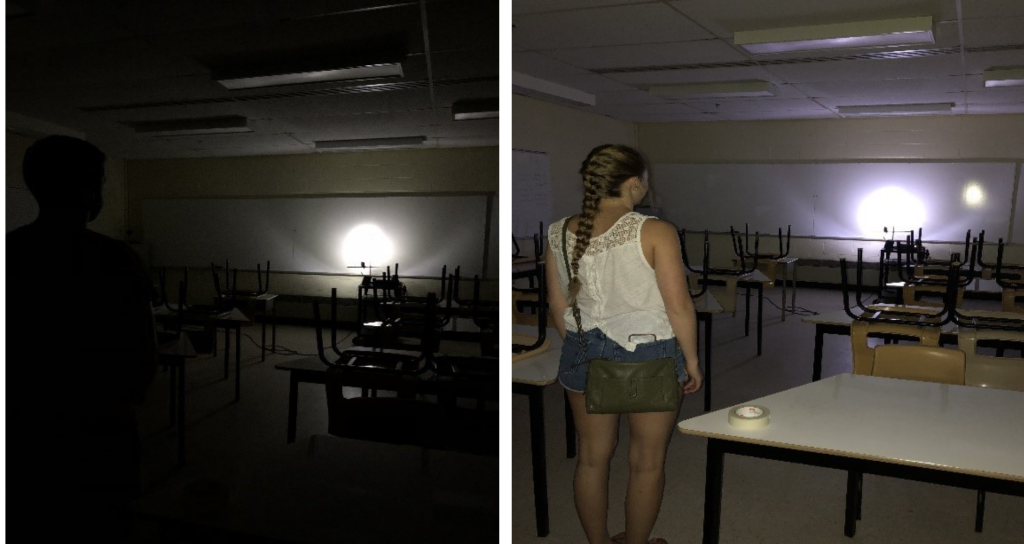
Benefits Of Three Batteries As Opposed To Four Batteries:
Three batteries, as shown above, has a smaller value for current, light intensity, and voltage. It lasts for more than double the time though, while creating sufficient values for light intensity, current and voltage. Using less batteries to get sufficient use of the lights, for more time makes more sense for cost, and for the environment as well.
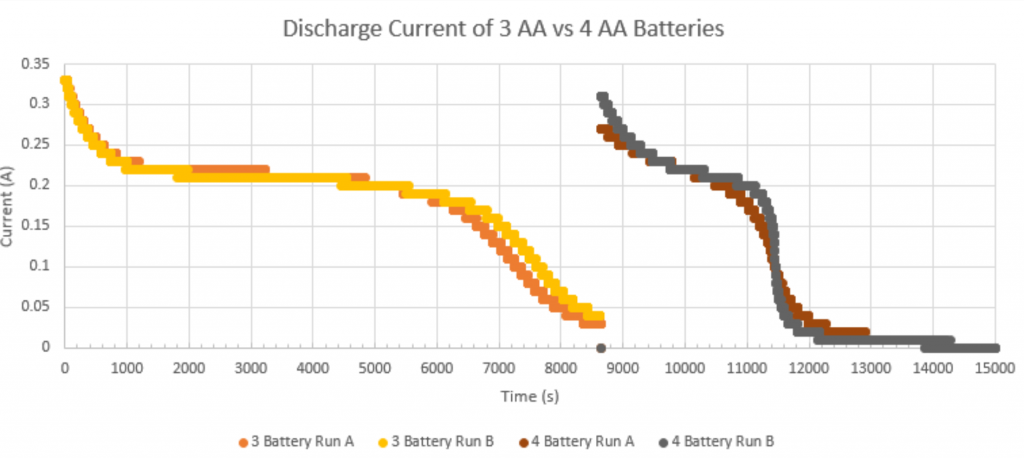
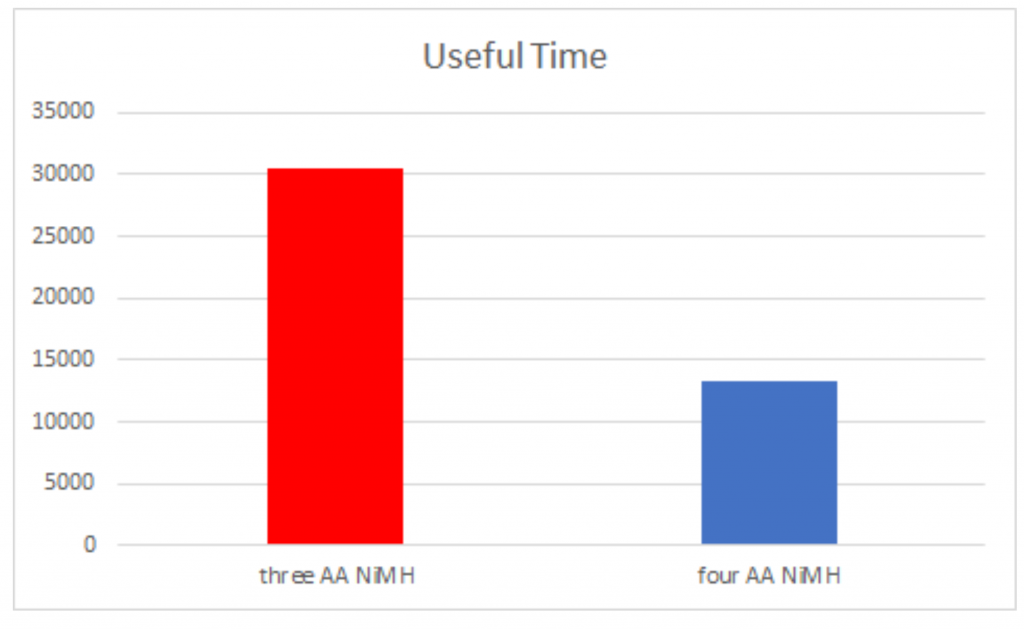
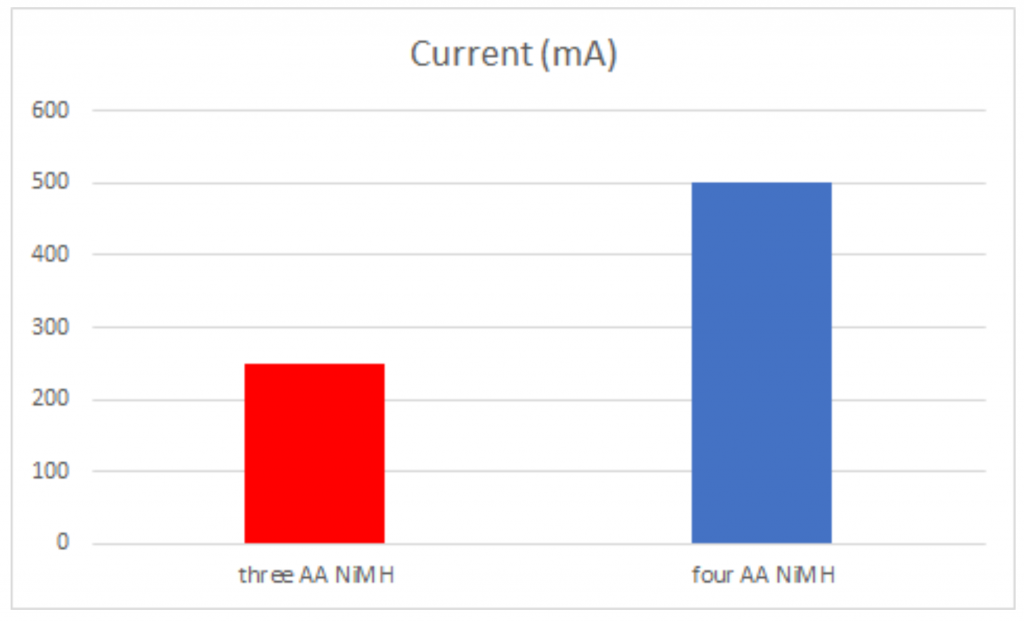
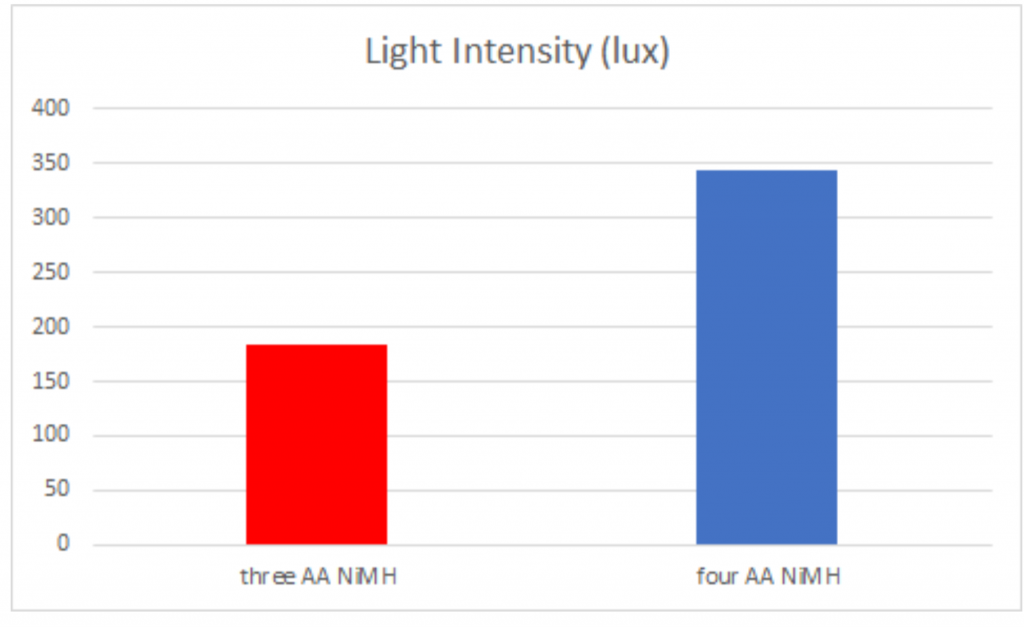
An 8 pack of Bonai 2300 mAh, 1.2 v NiMH rechargeable batteries costs 16.99$ on Amazon. Using four batteries, we would only be able to make two lights with this many batteries. If we use three batteries, we would be able to make almost three lights with this amount of batteries. If we were to buy three packages of these batteries, using four batteries per light we could only make six lights. Using three batteries, we would be able to make eight. at 17$ for a package of 8, this makes a dollar to battery ratio of 2.125:1. Using three batteries per light would help us save 2.125 dollars every light, eliminating one battery. Over time, if 100 lights are made, we would save 212.50$ on batteries.
The positive environmental impact this would create is also a factor. Hazardous wastes are poisonous byproducts of manufacturing and even household items, the big one being batteries. These extra batteries we use will eventually need to be replaced, therefore being thrown out. Using less batteries per light means we will not have to throw as many batteries out, which will help preserve our planet for longer than if we had more batteries to throw out.
Conclusion:
Three batteries is the clear answer to the question. Using only three provides enough light for double the amount of time, saves money and is also more environmentally friendly.
Past Case Designs
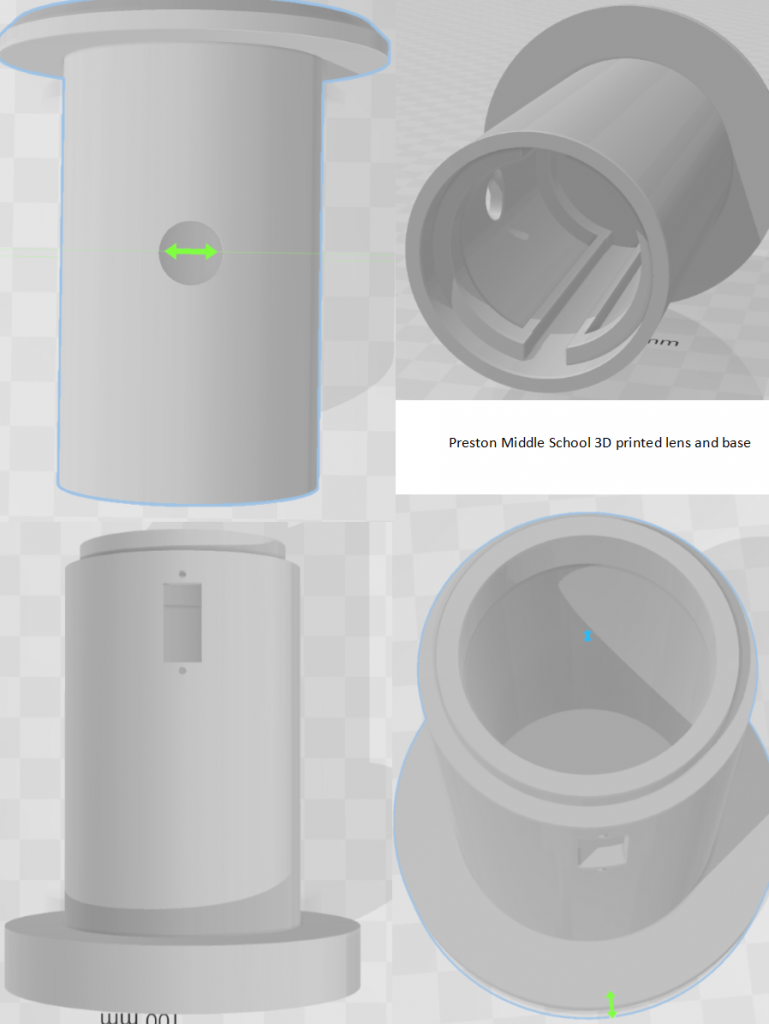
Preston Middle School, Colorado Lantern with 3D printed base and 3D printed lens circa. 2015. A great start while RHS focused on the Solar Blue and Yellow Circuits.

